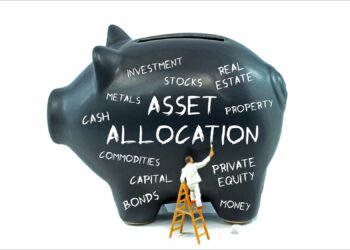New obligations under the Financial Adviser Standards and Ethics Authority (FASEA) code of ethics introduced in 2020 require advisers to meet new ‘ethical and responsible investment obligations’ to their clients. Standard 6 of the code requires advisers to actively consider each client’s broader long-term interests and likely circumstances, which means that clients should be questioned about their investment preferences around environmental, social and governance (ESG) and responsible investing including ethical issues.
However, the market is dominated by different terminology that can be confusing. Product names are often misleading and current approaches to investment ratings fall short in distinguishing between the various features sought by clients.
We demystify four common misconceptions in ESG and responsible investing, providing greater clarity around terminology and the distinct investment approaches. By better understanding the different approaches and how to assess them, advisers can be better prepared to meet their obligations and be in position to have more meaningful discussions with their clients and to provide solutions that better meet their clients’ needs.
Myth 1: ESG and responsible investment are the same thing
ESG investment and responsible investment are used interchangeably within the investment community, and are often, but not always, intended to mean the same thing.
The term ESG is widely used in many contexts and it means different things to different people. In reality, ESG is simply an acronym that specifically refers to environmental, social and governance factors.
Until recently, ‘ESG investment’ typically referred to an investment approach that prioritised companies with better environmental, social practices and governance – a logical approach that has been shown to reduce potential risk and potentially improve returns. Nowadays the term is often used as a catch-all term to describe a broader set of investment approaches that involve consideration of environmental, social and governance factors or deliver specific outcomes of a responsible or ethical nature., better described as responsible investment.
Responsible investment refers to a set of approaches that deliver outcomes of a responsible nature.
Myth 2: ESG and responsible investment strategies are all alike
Responsible investment strategies (or, as many still say, ESG strategies) are not all alike. They incorporate a variety of different approaches and techniques intended to deliver specific outcomes. Here we identify six distinct strategies which all fall under the banner of ‘responsible investment’:
- Traditional ESG strategies typically seek to reduce investment risk through focusing on companies with better ‘E’, ‘S’ and ‘G’ practices. However, other ESG strategies may focus on different outcomes – indeed, looking for companies that are improving their ESG practices is an equally valid approach and may provide better potential returns;
- Ethical strategies aim to avoid or reduce investments in areas of ethical concern, such as gambling or tobacco. The scope of their exclusions and related materiality thresholds may vary considerably;
- Low carbon strategies seek to deliver lower carbon emissions or carbon intensity, typically through investments in companies with inherently lower emissions, but not necessarily in companies that are directly contributing to global decarbonisation;
- Directly contributing to achieve a desired outcome is more the remit of sustainably-themed strategies. As the name suggests, these strategies are focused on investing in companies that are in some way ‘sustainable’ and often aligned with sustainability objectives such as the United Nations’ 17 Sustainable Development Goals;
- Impact strategies should provide intentional and measurable environmental or social outcomes. This has historically been possible only through direct or private investments, although the term is now being widely used by more mainstream listed sustainably-themed funds; and
- Engagement strategies seek to achieve better ESG outcomes through stewardship activities such as engagement with boards and management teams and targeted voting.
- It is important to note that these strategies are not mutually exclusive. Many ESG or responsible investment products align with two or more of these approaches.
A sustainably-themed strategy can also be ethical, but it may not be low carbon or high ESG scoring. A strategy whose ESG outcomes are delivered via engagement may be most effective if invested in companies with poor sustainability or governance, or environmental laggards requiring improvement. What is appropriate depends on what each strategy is seeking to achieve, and no ESG strategy will be able to do all things well.
Additionally, the way in which the strategies are implemented will result in significantly different portfolios. Approaches such as negative screening, positive screening, best-in-class, or quantitative scoring will all results in different holdings. A passive ‘sustainability’ strategy that reduces or eliminates holdings in poor sustainability performers will provide a very different portfolio to an active ‘sustainability’ strategy which invests only in companies that meet high sustainability thresholds.
Each approach outlined above will lead to different underlying holdings and different outcomes for investors, both in terms of performance and ESG or responsible attributes.
Myth 3: ESG ratings provide a good assessment of ESG products
ESG and responsible investment encompasses a range of approaches so no single score can adequately measure the quality of a single product across all these approaches.
Many research houses are now providing ESG or sustainability scores, most notably Morningstar whose Sustainability Score (which is actually an ESG risk rating rather than a measure of ‘sustainability’) is widely referenced by advisers. Unfortunately, in many cases these scores do not provide a good measure of whether an ESG or responsible investment product is delivering what it should.
This is easy to understand when considering individual companies:
- A company like Mastercard may have good ESG practices and a high ESG score, and be low carbon, but will not necessarily provide strong sustainability related outcomes;
- A company like Phillip Morris may also have strong ESG practices and a high ESG score, and be low carbon, but is unlikely to be considered ethical by many; and
- Vice versa, companies like Tesla or Waste Management may provide strong contributions towards environmental outcomes but will not necessarily have low carbon emissions relative to banks or technology companies, and may not score well on traditional ESG metrics.
What should be obvious is that separate measures are required to assess a fund’s performance in each aspect of ESG or responsible investment.
Some researchers have started to develop targeted measures, such as Lonsec’s 5 Bees Sustainability Scores, but, as with traditional ESG scores, there are not yet standardised measures of sustainability or ethicalness and such measures can still differ depending on providers.
In the future it is likely we will see greater standardisation of terminology and the emergence of better measures of sustainability, impact, ‘ethicalness’, and low carbon alignment to complement the more widely available measures of ESG best practice.
Similarly, for now, there is no standardisation of product naming. Many funds bear names that include words like ‘sustainability’ that infer certain expectations for their approach and holdings.
In the meantime, the best advice for advisers is to truly understand what clients are seeking and then consider whether the portfolio holdings and the manager’s stewardship activities align with those expectations.
Myth 4: A good ESG product is a good investment
There seems to be a growing belief that a product that is good from an ESG perspective is likely to deliver good investment outcomes.
It should be clear that ESG or Sustainability Ratings are assessments of only those aspects of a product, not the product’s potential to meet investment objectives or its suitability within a client portfolio.
Companies within responsible investment funds might be less likely to be involved in environmental disasters, human rights issues and corporate scandals that could negatively affect their investment performance. Companies involved in providing sustainable technologies may benefit from strong growth in these areas and this has already been reflected in the strong investment performance of many of these companies.
However, the old adage – past performance is no indication of future performance – remains true, and the increasing interest and investment in ESG and sustainability leaders today may end up detracting from future performance.
We continue to focus on actively generating returns from investments in a universe of listed equities exposed to the broad themes of environmental sustainability and resource efficiency, and looking beyond the most prominent names for opportunities with better return potential.
Advisers need to balance appropriately the responsible objectives with their investment goals and find products that are able to deliver the right balance between the two.
Tom King is chief investment officer at Nanuk Asset Management.





